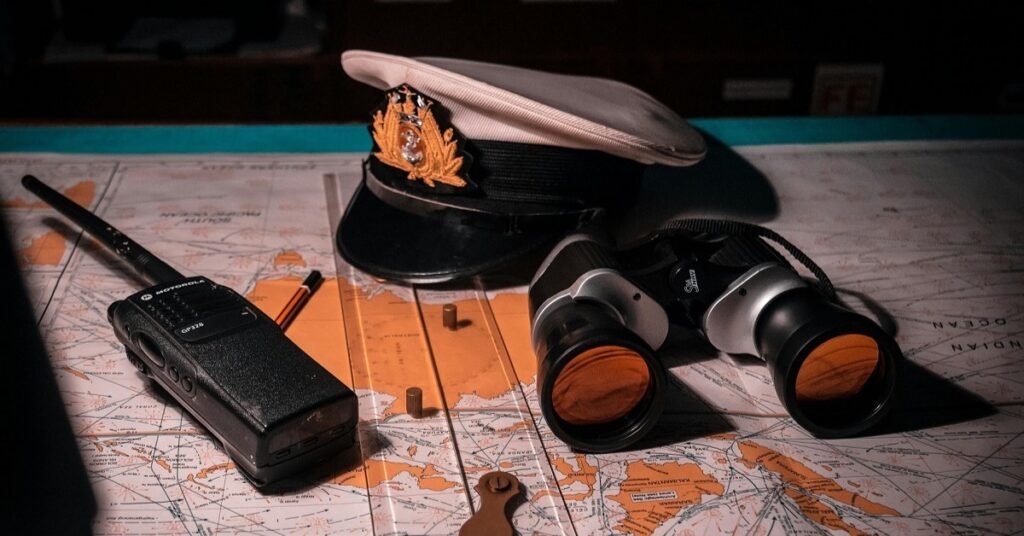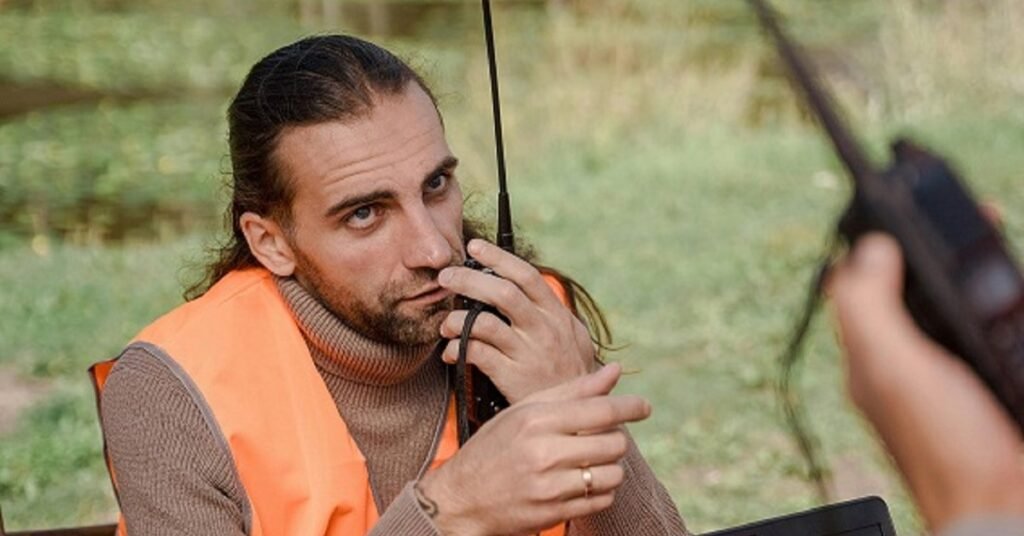Table of Contents
ToggleAre Walkie-Talkie Channels Universal? A Ham Channel Review
When people find out that I am a ham specialist, the question I face most often is, “Are walkie-talkie channels universal?”. Consider this scenario: you’re happily conversing on channel 01 with a friend, and you’re wondering if someone on the same channel halfway around the world might join in. Is this even possible? Well, let’s dive into the fascinating world of walkie-talkie channels and frequencies to clear up the confusion.
The Reality: Frequencies Are Universal, Not Channels
The first thing to grasp is that frequencies can be global, but channels cannot. Imagine frequencies as the universal language of walkie-talkies. Whether you’re broadcasting on 445.000 MHz in the United States or across the ocean in the United Kingdom, someone tuned in to that frequency might potentially hear you. However, simply because the frequency is the same does not mean your walkie talkie channels are.
Channels, however, function like dialects but are variables on the brand and model of walkie-talkie in use. Example: Channel 01 on one brand may run a different frequency than Channel 01 with another brand If both radios set the same channel number it does not mean that they are operating on the very same frequency. For them to communicate they must be path-aligned.
The Myth of Universal Channels

Although channels are not generally defined, several frequencies are well recognized and utilized across the world. These are usually controlled by local governments to guarantee that everyone is on the same page—similar to a universal manual for walkie-talkies. Here are some instances.
GMRS Channels (US): In the US, GMRS radio services are widely used for interpersonal communication. In the USA, the frequency range of 462.5625 to 462.7250 MHz is where general mobile radio services (GMRS) are most often utilized. UHF frequencies serve as the foundation for GMRS channels.
NOAA Weather Alert Channels (US): For weather forecast one way NOAA weather alert channels are most used worldwide also in the United States. Thay are mainly VHF channels. These channels can keep us up to date no matter from where we are receiving.
U.S. CA Railroad Channels: Want to talk like a train professional? The VHF frequencies, which range from 159.8100 MHz to 161.5575 MHz, keep the train discussions going.
FRS Channels (US): The Family Radio Service (FRS) channels run from 432.5625 MHz to 467.7125 MHz and are ideal for short-distance communication among relatives or family.
These are some of the “universal” channels in the sense that they are commonly used, although not all walkie-talkies will automatically connect to them. If your radio is meant for GMRS or FRS, you will be limited to those frequencies. Thus, the concept of global channels remains more fiction than fact.
Remember the nostalgic first FRS walkie-talkie from Motorola? Let’s take a look here.
Walkie-Talkies with Fixed Channels: The Cases Like PMR446

Let us discuss about fixed channels. Some walkie-talkies, such as the PMR446 radios popular in Europe, have preset channels that cannot be modified. These radios feature 16 channels that are genetically programmed for PMR446 transceivers. The good news is that this allows you to communicate with other PMR446 radios right out of the box. What’s the downside? You are confined to certain channels, which may not allow you to change frequencies if necessary.
Fixed-channel radios are useful for maintaining compliance with local requirements, but they might seem restrictive when you need more flexibility. If you enjoy tweaking and customizing settings, they may not be the ideal option.
Different Brands, Different Worlds
This gets considerably more complex when trying to connect radios on different frequency bands. VHF radios (which operate across the 30-300 MHz) have longer wavelengths, which means they are great for outdoor communication and long-range talk. This is while UHF radios (300–3,000 MHz) have lesser wavelengths and are best for traveling around busy cities. The only thing is: VHF radios and UHF radios are unable to talk with each other.
To ensure that these devices may communicate with one another, you must match the actual frequency and tone settings rather than just the channel number. This is when programming software comes in useful. It allows you to manually alter the frequencies and tones on each radio, ensuring that they all sing the same tune, regardless of brand. One of the main takeaways from this ham radio review is that brand compatibility can be difficult, but it is possible with the correct tools and information.
Get more details on the Ham Radio Frequency Chart. Click here.
Bridging the Gap Between Different Bands
Things get considerably more complicated when you try to link radios that use various frequency bands. If we think about VHF handheld or two way radios which use from 30 MHz to 300 MHz have longer wavelengths. They can cover much longer distances outdoors and perfect for long distance communication in open areas. On the other hand, UHF radios have smaller wavelengths (from 300 MHz to 3000 MHz) than VHF radios. They are best for smaller area communication with obstacles. Suited for a much populated area and where there are tall buildings and trees to overcome to communicate. The important thing is VHF and UHF radios cannot communicate with each other directly.
If you want to converse between these two bands, you’ll need to use a repeater or alter the offset settings on a dual-band radio. Consider using a translator: without one, your radios will only be speaking two distinct languages. It’s another crucial consideration in this review.
Need a guide to amateur radio repeaters, types, setup, and top brands? Just read here.
Walkie-Talkie Channels Across Borders: The U.K. vs. The U.S.
When you include international borders, things become much more convoluted. Walkie-talkie channels can differ greatly between nations, especially between the United States and the United Kingdom. What is a free-for-all consumer channel in the United States may be designated for emergency services in the United Kingdom. Imagine mistakenly broadcasting on a frequency designated for firefighters—not a nice image!
You better check local and international rules and restrictions if you want to bring your personal beloved walkie-talkie with you when you are traveling overseas. From my personal experience, I saw a lawful acceptance in one country may get trouble in another. Always verify the local restrictions before turning on your radio, otherwise you may accidentally disrupt essential conversations.
Regulatory Roadblocks: Different Rules for Different Countries

Different countries have different restrictions for radio transmissions. These laws govern everything from frequency allocation to licensing requirements and certifications. For example, in some areas, operating on specific frequencies may need a special license. In others, you may be confined to a narrow range of frequencies allocated for public use.
To prevent breaking the law (and maybe receiving a heavy punishment), always verify the local legislation before you begin sending. Before taking your device with you, do a little research. That saves you a lot in the long term.
The Digital Walkie-Talkies
Another factor to consider in this ham radio study is the rise of digital walkie-talkies. These devices employ digital modulation, which implies that the channels are encoded differently than typical analog walkie-talkies. Because digital radio transmissions are more difficult to intercept, they frequently provide higher sound quality, greater range, and more security. Unfortunately, digital and analog radios cannot interact directly with one another.
When you are in a group communication and some of your group members use digital walkie-talkies and others use analog walkie-talkies then it can be a problem connecting them together. You will need some internet based repeater or dual transmit adapter for retransmitting digital voice to analog frequencies. In this situation I prefer making a digital-analog adapter using an internet connected computer and a digital walkie-talkie. Or ensure all of your members use either analog or digital radios. This is another case when understanding your device and its limits is crucial for effective communication.
The Future of Walkie-Talkie Channels: Standardization or Fragmentation?
Looking ahead, one can ask if walkie-talkie channels would ever be genuinely global. While some industry professionals urge for increased standardization to improve communication, various nations, brands, and technology continue to pull in different ways. The greatest advise right now is to be educated, recognize your equipment’s limitations, and be prepared to change as required.
LTE based walkie-talkies can be the future of combined technology of digital and analog walkie-talkies. These types of walkie-talkies can send and receive digital signals and analog signals. They are also capable of retransmit received signals from digital to analog or analog to digital. LTE walkie-talkies are capable of long distance communication using cellular network interface. Although they have dependency on cellular tower availability and in some cases they aren’t capable of connecting many old analog walkie-talkies.
Final Thoughts
Are walkie-talkie channels universal? In one word, if we say, the answer is “NO”. But wait, that’s not all. We have many things to understand. While channels aren’t always ubiquitous, the frequencies they employ are. This implies that, with the proper settings, you may converse across several radios, brands, and even nations. However, you will need to do some research to ensure that everything is in order.
Understanding how channels and frequencies operate may make a huge impact in how you communicate, from fixed-channel walkie-talkies to brand compatibility difficulties. So, the next time you’re prepared to hit the airwaves, remember to double-check your settings, understand your restrictions, and tune in to the correct frequency. After all, effective communication is the name of the game—and with the right knowledge, you’ll always be on the winning side!


